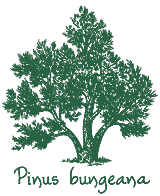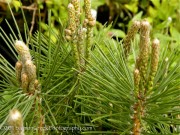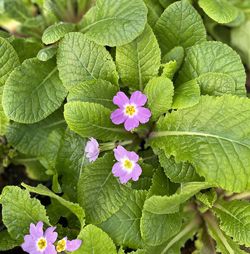Pinus
Pine
OUT OF PRODUCTION AT THIS TIME
Email me when this plant is available

Discovered by the Russian collector, Dr. Alexander von Bunge in 1831 on the grounds of a Buddhist temple near Beijing, this medium-sized hardy pine emphasizes mesmerizing details throughout the year: artful mottled bark, dapper grassy green needles and an airy picturesque silhouette. The ornamental exfoliating bark peels back to reveal an extraordinary tapestry of silvery white, olive green and pale purple splotches amidst 4 in. long rigid needles, arranged in bundles of 3, and small amber brown cones.
Branching near its base, Lacebark Pine grows slowly into a stylish multitrunked specimen with a broad, sometimes shrubby, spreading form that enjoys sunny well-drained sites. Grows slowly. Medium Band.
Size: 20' 0" – 45' 0" high x 20' 0" – 35' 0" wide.
Hardy to zone 4.
Pinus thunbergii var. Mikawa var. Mikawa (T-0258)
OUT OF PRODUCTION AT THIS TIME
Email me when this plant is available

Championed by artists and bonsai aficionados for centuries, this distinctive Pine spotlights pairs of nearly white new growth, thick rigid needles, corky purplish black bark, and stout twisting horizontal branches that can sustain just about any amount of pruning or trimming. Mikawa’s rugged naturally dwarfed trunk crafts an exquisite bonsai specimen, while acquiescing to con-tainer culture, salt spray and poor sandy soil. Grows very slowly.
Medium Band.
Size: 5' 0" high x 2' 0" wide.
Hardy to zone 5.










